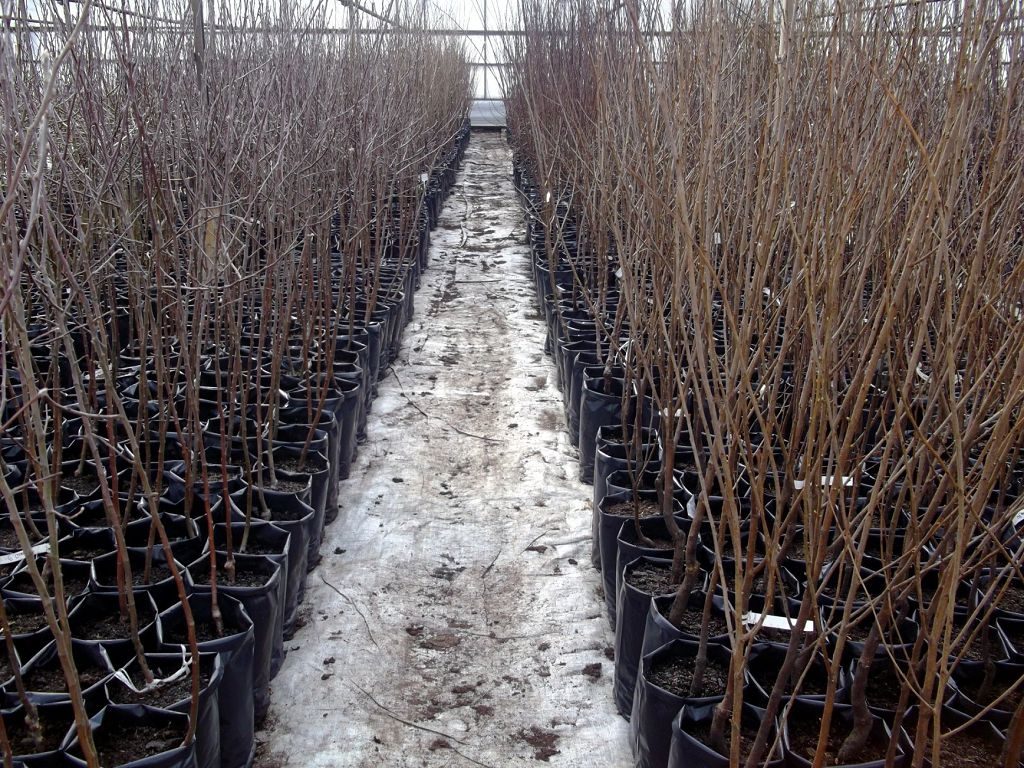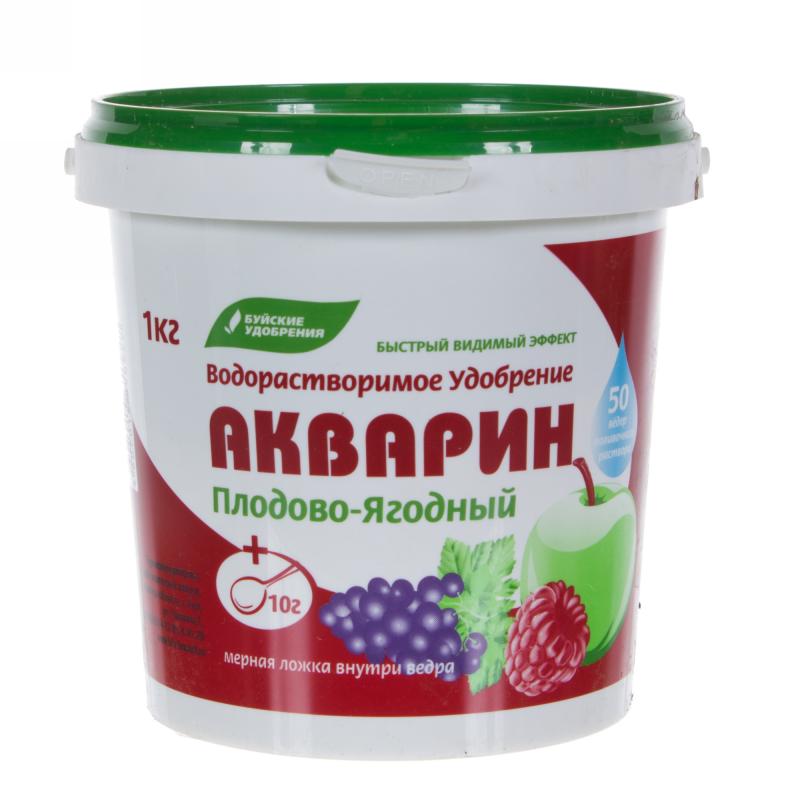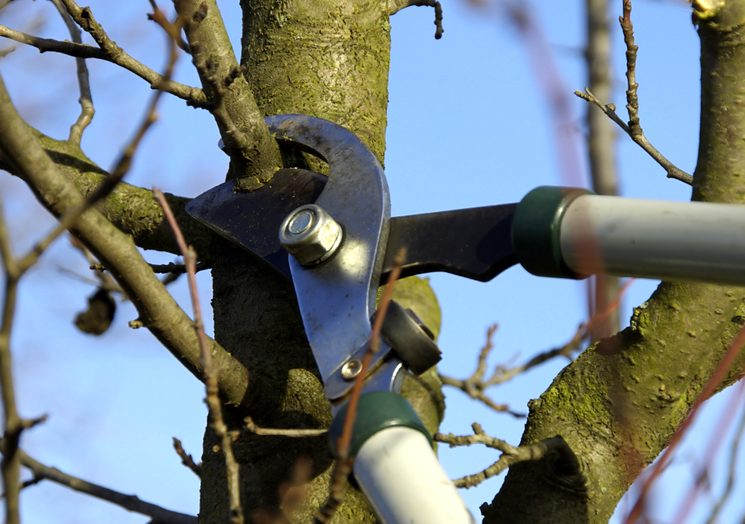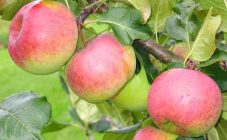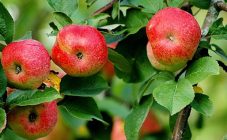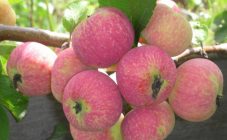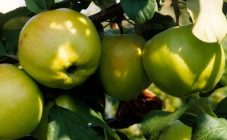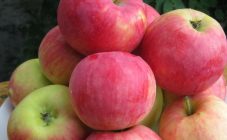Content:
Apple trees grow on the plots of many gardeners. This way the culture is easy to care for and yields in different climatic zones. Among the varieties most demanded in the domestic horticultural market are Yablonya Orlovim.
History of creation
The Orlovim apple tree was bred in the seventies of the last century at the All-Russian Research Institute as part of the work on the breeding program for various fruit crops. Such eminent breeders of those years as Serova, Zhdanov and Sedov worked on the breeding of the variety. Scientists were able to get this apple variety by crossing Antonovka with a seedling SR0523. The latter, in turn, was obtained by crossing several crop varieties with a summer ripening variety. The apple tree Orlovim took from the "parents" most of its characteristics and varietal characteristics.
Characteristics of the variety
Orlovim apple tree, in accordance with the description, is a medium layer. The maximum height to which a tree can grow is 5 m. The culture is characterized by a crown of medium thickening, round or broom-shaped.
The leaves of the plant are medium-sized, light green in color. This apple variety blooms with rather large flowers of a pale pink color.
If planting and caring for the plant is carried out correctly, fruiting will occur in three years. Orlovim bears fruit with medium-sized apples. Their weight is about 170 grams. The fruits are conical in shape, they are characterized by a mild ribbing. The peel of apples is glossy and smooth. As it ripens, the fruit turns from green to yellowish with a slightly blurred red blush.
The pulp has a pleasant creamy color, sweet taste. Besides, it is quite dense and very juicy.
The main characteristic that the Orlovim apple tree has is the early ripening of apples. The fruits begin to appear at the end of August. It is recommended to remove them in a timely manner, since they may crack when dropped from a tree, which negatively affects their shelf life. On average, the harvested apples can be stored without processing for about a month. The fruits of the Orlovim varietal apple tree can be used for food both fresh and in the format of preserves, compotes, jams and other desserts.
The culture has a high rate of resistance to diseases such as scab. This sets the variety apart from most other apple varieties.
To get a good harvest of apples in the area with Orlovim, apple trees of other varieties should be planted. They will serve as a pollinator. If you forget about such a subtlety as a pollinator, the Orlovim apple variety will grow small and tasteless.
Planting and leaving
Any gardener is aware that planting apple seedlings should be started when the probability of frost on the soil is minimized. In central Russia, the optimal time for planting crops in the garden is May. But some gardeners prefer autumn planting, believing that during the winter period the plant will have time to take root and in the spring it will immediately begin to grow more actively.
Choosing a landing site
When planting a crop such as the Orlovim apple tree, it is very important not to be mistaken with the site. It should not only be well lit, but also ventilated from all sides.When choosing a place, you need to carefully examine the summer cottage and make sure that the groundwater runs at a depth of at least two meters. If there is a threat of flooding, it is strongly recommended to place a young apple tree somewhere on a hill.
Landing features
To plant an apple tree, Orlovim will need to dig a hole about 60 cm wide and 80 cm deep.
Before placing a seedling in a hole, you should carefully examine its roots. If individual damaged roots are noticed, they should be carefully cut with a secateurs. The distance between the seedlings should be about 3 m, and between the rows - 5 m. But this requirement is relevant only if we are talking about planting a full-fledged apple orchard. Upon completion of planting work, the tree must be mulched with peat or sawdust and provide the plant with abundant watering.
Watering and loosening
If the rains are not too intense, the plant will need watering at least three times during the month. Around the middle of August, watering the plant is finished.
Care should be taken to ensure that the soil around the trunk does not dry out. Each irrigation performed should be completed by loosening the soil.
Top dressing
Any type and variety of apple trees in the first year after planting does not require feeding. Starting from the second year of life, the culture will need to be fed at least three times during the season. The first top dressing is applied in the spring, in mid-April. Usually the soil is enriched with a mixture of urea, nitroammophoska, saltpeter and compost. The next fertilization is timed to the flowering period of the plant. In this case, superphosphate, urea and potassium sulfate diluted in water are used. The solution should be allowed to stand for a week before use.
After another 1 month, top dressing is applied for the third time. In this case, a solution of dry sodium humanate and nitrophoska is used.
In all cases, it is allowed to use ready-made complex fertilizers, such as Nutrevan Plus, Aquarin, etc.
Disease and pest control
To prevent Orlovim's apple tree disease, prophylaxis is usually carried out. Spraying the plant with a solution of urea and copper sulfate will help prevent the appearance of a number of fungal diseases and creeping insects.
Pruning
It is necessary to prune the apple trees. It is best to do this in the spring, before the buds swell, or in the fall, after leaf fall. Dry and diseased branches are subject to removal. The cut is made at an angle above the bud or lateral branch. If the cut site is large enough, it is strongly recommended to process it with a garden varnish in order to prevent infection.
Young trees need refreshing pruning. In this case, the formation of the crown is done by plucking.
Advantages and disadvantages
Like any other variety, the Orlovim apple tree has its own advantages and disadvantages. Among the advantages are the following points:
- high scab resistance;
- frost resistance;
- early fruiting;
- high yield rate;
- presentable appearance;
- excellent taste characteristics.
Among the disadvantages are the relatively short shelf life and the difficulty of care due to the height of the tree.

